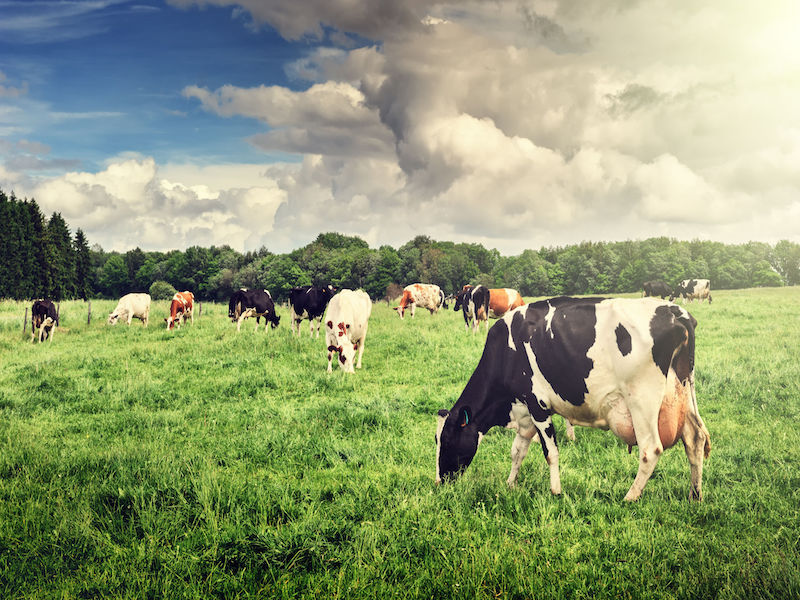

There’s plenty of room to grow in Canadian farmland, according to Kevin Fahey, director of investments at the Colleges of Applied Arts and Technology pension plan.
The United States and emerging markets offer opportunities as well, but farmland in Canada is cheaper than it is south of the border at the moment, he notes. As for emerging markets, while they may be inexpensive, they hold the same geopolitical and currency risks associated with other investments in such areas, he says.
As part of a broadening of its real asset allocations, CAAT is adding farmland to its real estate and infrastructure ventures. “Till the end of 2016, actually, we had separate allocations to infrastructure and real estate, but we combined them into a single real assets bucket . . . to give us some flexibility to toggle not just between those two but also to add other categories of real assets, whether it be farmland or timber, in all likelihood,” says Fahey.
Read: Navigating the complexities of investing in agriculture
Farmland provides diversity within the real asset mix, while simultaneously providing similar advantages to other assets in that category. “There are certain liability-hedging properties that come with historical links to inflation. So real assets across the board, whether it be traditional real estate or infrastructure, we’ve expected to get a degree of inflation protection from and we would expect the same kind of protection to materialize in farmland.”
Land used for agriculture does an especially good job of staying well ahead of inflation, says Joelle Faulkner, president and chief executive officer of Area One Farms. “Part of that will relate to the fact that it grows commodities. And so to the extent that commodities get more expensive, the land itself becomes more profitable and, therefore, more valuable,” she says.
Faulkner’s company assembles funds comprised of partnership investments with Canadian farmers through which existing operations seek out local growth opportunities by purchasing land to add to their current acreage. “We believe that Canada has significantly under-capitalized improvement work,” she says. By changing the use of farmland and reinvigorating unused land historically used for agriculture, it’s possible to add value, she says.
Read: Caisse invests in Quebec-based brewer, Ontario Teachers’ buys Australian avocado farm
“We find really good farmers, who have family farms, who want to expand,” says Faulkner. “They put in money and we put in money and we go in and buy land with them from farmers who want to retire.” For its institutional fund, the firm works with farmers all across Canada, except in Manitoba and Saskatchewan, which restrict institutions from owning farmland.
Interest from institutional investors is growing, says Faulkner. “We have probably talked to five times the number of firms this year as we have in the past. I think some of that is because we’re becoming more known, we’re becoming more relevant because we have a bigger size. But I actually think a lot of it is plans integrating a desire for real assets that are inflation hedged and non-correlated.”
In looking at farmland in Canada in particular, pension funds don’t have to worry about infrastructure or legal issues the way they may need to in other countries, says Faulkner. Instead, understanding the investment means grasping the underlying value and potential productivity of the land. As well, pension plans should be aware of how much say they have over the operations on the land, she says. “We like not only having the land but also having operations because it gives us great control over what happens on the farm itself. So, we can choose practices that make the farm more profitable over time by building up better soil, and that, over the long term, makes a difference.”
Read: Sprott and Ceres Partners team up to launch farmland fund
Area One Farms’ approach of working alongside existing farmers gives the firm access to an area of the market that’s normally extremely insular, says Faulkner. “So, 85 per cent of the land trades off market, so it never has real estate market,” she says. If investors tried to make forays into purchasing land on their own, they would lose out on four generations of “institutional memory,” as Faulkner puts it. “‘That farm used to be my uncle’s, and it was the best farm in the area. And then he took a job at a mine and now it’s grown over, but it has amazing land.’ We get a lot of that,” she says of the scenarios at play.
Another value-add factor for investors looking to make gains in the long term is the fact that Canadian agriculture will be a net beneficiary of climate change, says Faulkner. As the planet warms, areas closer to the equator are going to experience more drought, she says, noting heavier rains will be moving north.
Indeed, Canada’s water security is a big part of why CAAT looked domestically for its foray into farmland. “From a climate perspective and a water availability perspective, we see that Canadian farmland is well positioned, I think globally, to continue being a productive contributor to global food markets,” says Fahey.
For CAAT, its real assets portfolio is still in “growth mode,” according to Fahey. Of the 13 per cent allocation to those assets at the end of 2017, there was a tilt towards infrastructure. “I would characterize it as very much a toe in the water at this point,” he says of the foray into farmland.
“It’s a very small portion of our real asset portfolio at this stage while we get acquainted with the asset class.”
